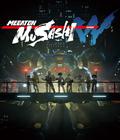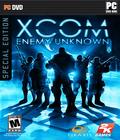With the franchise dormant for so long, it has to be difficult to bring X-COM back to life as a modern game. On the one hand, a lot of people barely remember the games — or even played them. On the other, a rabid fan base remembers it, and many turn-based strategy games owe a lot to what X-COM accomplished in 1994. XCOM: Enemy Unknown is a complete remake of the original, sharing the same name and much of the design. Given how strongly it sticks to the original pedigree, it also plays rather differently than other modern strategy titles.
XCOM: Enemy Unknown puts you in charge of a secret organization named XCOM that is tasked with protecting the world from alien threats. When a group of hostile aliens abducts humans and wages outright war, it is XCOM's job to push back and protect the planet. This is done through turn-by-turn tactics while fielding a ground squad against hostiles, but in terms of a longer-term strategy, you must manage limited resources and manpower to advance your research and expand your base of operations. To succeed in the game, you must succeed in both of these areas, as your operatives are nothing without backing and a global satellite network is useless without a solid team of boots on the ground.
Make no mistake: Combat is still a major part of the equation. You can field up to six operatives per mission and must use them to effectively complete the objectives. This can be as simple as wiping out the opposing alien forces or escorting a civilian back to your dropship. However, advanced mission types require a bit more cunning, such as trying to save a bunch of civilians, who are spread out across the map, from being massacred or disarming a bomb before it wipes out a chunk of a city. Nearly every time you commit to an action, there are a lot of fundamentals and things to consider.
Under most circumstances, units can perform an action, move and then perform an action, or move twice as far but do nothing else during that turn. Basic attacks allow you to select an available target and the chance of a successful attack. In theory, this lets you pick the target that you have the highest chance to hit, but it's possible to have an entire squad of six miss a shot that had a 50% chance to hit. One of the first things to learn about XCOM is that it really subscribes to Murphy's Law, and if luck can work against you, it often will in the worst of times.
This puts the emphasis on using your operatives to their full effectiveness, so simply trading fire with the enemy won't cut it. Operatives that have made it past the Rookie rank will specialize in a class: Assault, Heavy, Sniper or Support. Each class has a set of skills and weaponry, and using them effectively can be key to winning a battle. For example, a well-placed rocket from a Heavy can deal a lot of damage against a group of entrenched enemies, whereas the Support class can help suppress enemies to lower their accuracy or run around to heal wounded operatives. Snipers are more accurate the farther away they are, and they can deal damage and disable enemy weapons by simply shooting at them. Finally, with their shotguns in hand, the Assault class can zip around the battlefield and blow apart aliens in close-quarters combat.
Cover is one of the most important gameplay mechanics to understand and utilize, but the implementation can also cause confusion. Cover is broken down into two types, partial cover and full cover, with only full cover providing the maximum amount of defense. Cover helps protect against enemy fire and breaks the line of sight, so you can set up ambushes but you must also check corners and slowly pick your way through an area. However, the cover and line-of-sight mechanics don't work as expected, as you can often shoot at (and be shot from) targets that are on the other side of brick walls, trucks, and other presumably "bullet resistant" objects. This makes cover frustrating at times, as your operatives are still vulnerable behind solid cover that breaks line of sight.
To help avoid falling into ambushes, you can stagger your moves. Though an operative can move and perform an action in a turn, you don't have to do both before moving on to the next operative. This allows you to move one operative to check a corner and then move a second operative across the street to the opposing corner. One action that every operative can perform is Overwatch, which makes the operative stay put but shoot at the first enemy within range, regardless of whose turn it may be. Likewise, enemy units can also go into Overwatch and take effective potshots at your operatives as they scramble from cover.
Line of sight and flanking further dictate the flow of battle. At the beginning of every operation, your squad is unaware of enemy positions, so you must carefully work your way through the environment. Moving too far into enemy territory often leaves an operative exposed, so it's best to slowly uncover new areas while covering the immediate area. Once enemies have been located, even the best cover won't protect them from a solid flank, and when in a flanking position, your operatives gain an accuracy bonus. Of course, enemies can and will do the same to you, such as avoiding a doorway with Overwatch to flank you from a side door.
Equally important are your actions back at the base. Represented by a grid of underground areas, your base is a structure that can be expanded. Buildings, such as workshops and laboratories, increase your engineer and scientist staff numbers, while other buildings help you research new technologies or check soldiers for latent psionic ability. Of course, expanding your base represents an up-front cost as well as a monthly cost for every addition, so it's a balancing act in prioritizing what you want and need versus your cash flow. Your money is also used for everything from hiring new recruits to manufacturing new guns and items for your operatives, so it's one of the most important resources you have.
It's not the only balancing act that you must achieve. By killing enemies and recovering their artifacts and bodies, you unlock new avenues of research for your scientists. It takes a certain amount of time to complete the research, though that time is decreased if you have more scientists on staff. However, you cannot switch midway without losing all progress on the current task, so you need to commit to a choice. You also usually have a pretty decent pool of research options, so you have to consider whether you want to investigate new fighter craft to field or stronger armor to better protect your operatives.
Fighter craft and satellites represent more strategic usage of resources that are spread across a world map. Satellites can be based over countries in various regions, and doing so prompts them to give you more money per month in return as well as a steady stream of new engineers and scientists. It also helps you keep tabs on events in the area, such as when UFOs fly through that country's airspace. To combat the various forms and strength classes of UFOs, you send fighter craft, which start off as normal fighter jets and end up being sci-fi-worthy strike craft. Shooting down a UFO allows you to send a dropship to investigate and mop up the survivors, but more importantly, it helps reduce the nation's panic level.
Panic is yet another "resource" that must be carefully monitored and managed. There are five panic levels in the game, and at the end of the month, any nation with maxed-out panic will leave the XCOM project and cut its funding. This can be difficult, as there is no surefire way to reduce it. In addition, the alien abduction mission type shows three nation destinations but only lets you pick one. You get the reward for the listed one assuming you succeed, but the panic level increases for the two other nations. It's difficult to complete a play-through without a nation leaving the project.
The game does a pretty good job of disseminating the information that you need for easy interpretation, but much is learned as you play. In an endearing way, while other games love to hold your hand, XCOM: Enemy Unknown certainly does not, often using that hand to slap you. You will often stumble upon brand-new enemy types, and your first exposure to their tactics may begin with them one-shotting one of your best operatives. Death is permanent in the game, and while operatives can occasionally go critical — allowing them a couple of turns to stabilize and be saved — most of the time they simply die. You learn lessons the hard way, and you'll get pissed when your prized operatives are wiped out, but it also makes conquering those lessons that much more gratifying.
That's not to say that every obstacle ends in a storybook conclusion. You will fail, and you will fail hard. You will pick a squad of your best operatives and get them all wiped out while facing a new enemy. You will have to put green recruits into the field that are prone to panicking and losing turns. You will have to choose to keep one nation and lose two. There are many situations that simply don't have a favorable outcome, merely ones that are less catastrophic. Even on the easiest difficulty level, this title is not forgiving, and while it heavily favors forward thinking and planning, it is also more than capable of laying the best laid plans to waste.
XCOM: Enemy Unknown isn't just a pretty remake of an older game but a throwback to games that presented you just enough information to enter the cycle of attempts, failures, learning, and finally succeeding. By not holding your hand and letting you fail, even during the course of a pitched campaign, it really sweetens your successes and gives you a sense of personal ownership that many modern games lack. From its tough yet fair challenge to the way that all of the systems interconnect, XCOM: Enemy Unknown is an absolutely fantastic game and somehow balances what could have easily been an overwhelming palette of gameplay elements into one ridiculously engaging package.
Score: 9.5/10
More articles about XCOM: Enemy Unknown











 With equal emphasis on deep strategy and intense tactical combat, XCOM: Enemy Unknown places players in control of a secret paramilitary organization called XCOM.
With equal emphasis on deep strategy and intense tactical combat, XCOM: Enemy Unknown places players in control of a secret paramilitary organization called XCOM.











































